
In the following sections, you’re going to learn everything you need to know about how to fly a drone. While the experts make it look easy, the truth is that flying a quadcopter for the first time can be quite a challenge! But don’t worry, because you’re going to learn all the steps, from A-Z, on how to successfully fly a quadcopter. And the best part is that you’ll have complete control over your device. With that being said, let’s get started!
Important Note: For the sake of the following tutorials, I’m going to assume that your transmitter is setup in the following fashion: the yaw and throttle are controlled by the left joystick, while the roll and pitch are controlled by the right joystick. Some transmitters are setup backwards to this configuration, which is why I thought I’d bring it up.
How to Fly a Drone – Part 1: Understanding Basic Transmitter Anatomy
If you’re going to learn how to fly a drone safely and precisely, then you first need to understand the basic functionalities of a quadcopter’s transmitter. The transmitter is the hand-held controller that you’ll use to pilot your quadcopter. With a few exceptions, all transmitters come with two joysticks – a right and a left. By adjusting these sticks, you can send your drone in a specific direction.
Right Stick
The right joystick controls “Roll” and “Pitch”. In other words, it allows you to fly your drone forwards & backwards, as well as left & right. Before you learn how to fly a drone, let’s take a look at these two functions a little more in-depth.
Roll controls the right & left movements of your RC quadcopter. Below you’ll find an example of a quadcopter rolling to the right and left. If you look closely, you’ll notice that when the quadcopter rolls to the left, the two left propellers dip towards the ground (while the right ones move towards the sky).
The opposite happens when rolling to the right. When learning how to fly a drone, you need to pay exceptionally close attention to your rolls. Swinging to far to the right or left could send you flying towards a house, tree, or other object that could potentially damage your drone!
Pitch controls the forward & backward movement of your RC quadcopter. And it’s something you must master when learning how to fly a drone. Similar to rolling, when you pitch forward, the two front propellers are going to dip towards the ground while the two rear propellers raise towards the sky (the opposite is true when pitching backwards).
As long as the front of the drone is facing the same direction you are, the pitch controls are relatively straightforward: just move the right joystick up or down to move forwards or backwards. However, it becomes trickier when your orientation with the drone is “off”. In this case, the drone might not go directly forwards or directly backwards – it might go off at an angle instead.
Left Stick
The left joystick controls “Yaw” and “Throttle”. In other words, it allows you to fly your drone at a specific height, as well as rotate your drone along its central axis. Before we go on to talk about how to fly a drone, let’s look at yaw and throttle a little more closely.
 Yaw controls the clockwise & counterclockwise rotation of your RC quadcopter. Imagine a disc-shaped UFO rotating in a clockwise direction – that’s yaw. Since yaw is controlled by the same joystick as the throttle, beginner flyers often have difficulty controlling them both simultaneously. Fortunately, with enough practice, I’m confident you’ll master it in no time.
Yaw controls the clockwise & counterclockwise rotation of your RC quadcopter. Imagine a disc-shaped UFO rotating in a clockwise direction – that’s yaw. Since yaw is controlled by the same joystick as the throttle, beginner flyers often have difficulty controlling them both simultaneously. Fortunately, with enough practice, I’m confident you’ll master it in no time.
Controlling yaw is relatively straightforward: by moving the right joystick to the right, you cause the drone to fly in a clockwise direction. Likewise, by moving the right joystick to the left, you force the drone to fly in a counterclockwise direction. On paper, understanding yaw is easy, however, it becomes much trickier to understand when you’re actually flying!
Nano drones like the Cheerson CX-10 and the FQ777-124 Pocket Drone have pretty quick “yaw rates”. Basically, this means that these drones are able to move in a clockwise/counterclockwise rotation faster than the average nano quadcopter.
 Throttle is what transfers power to the propellers and forces them to spin. As the propellers spin at a higher and higher rate, it creates a down flow of air that eventually lifts the quadcopter off of the ground. Throttle is the only control that you’ll have constantly engaged when flying.
Throttle is what transfers power to the propellers and forces them to spin. As the propellers spin at a higher and higher rate, it creates a down flow of air that eventually lifts the quadcopter off of the ground. Throttle is the only control that you’ll have constantly engaged when flying.
For this reason, it’s important that you become comfortable with fine tuning your drone’s throttle so that you can achieve your desired hovering position. Pushing the left joystick forward brings more power to the propellers, causing the drone to lift higher off the ground. Likewise, bringing the left joystick to its original resting position will cut off all power to the propellers and subsequently cause your drone to stop flying.
How to Fly a Drone – Part 2: How to Takeoff with Your Quadcopter
When learning how to fly a drone, one of the first things you need to master is the takeoff. After all, you can’t much with your drone stuck on the ground!
Here are a few simple steps that you can follow to perform when learning how to fly a drone and taking off:
- Locate the Throttle: For this exercise, you’ll only be using the throttle (or left joystick). Remember that the throttle is what gives power to the propellers thus, allowing the drone to takeoff. For the time being, ignore all other joysticks, buttons, and switches on your transmitter.
- Set Your Drone Down on a Flat Surface: Place your quadcopter on an even surface approximately five feet in front of you. Make sure you have plenty of space available (you don’t want to accidentally hit anything). Also, if you’re flying outside, weather conditions should be suitable for flight.
- Bind Your Transmitter to Your Drone: Nearly all RC drones require that you “bind” your transmitter to the quadcopter prior to takeoff. This is usually done by powering on your transmitter and drone, followed by moving the left joystick up then down. At this point, you’re ready to fly.
- Slowly Push The Throttle Stick Up: Start at the 10% throttle and slowly work your way up. The goal, at least in the beginning, should be to get your drone a few inches off the ground, and then go back down. Repeat this several times until you’ve become comfortable with the throttle sensitivity for your drone.
In the next section, you’re going to learn how to hover with your drone.
How to Fly a Drone – Part 3: How to Hover with Your Quadcopter
The term “Hover” refers to a drone’s ability to remain in a fixed position mid-air. As a beginner, achieving a steady hover will be a challenge. Fortunately, with enough practice, you’ll have it mastered in no time!
Hovering Exercise
To learn how to fly a drone, a hover it successfully, perform the following exercise:
- Use The Throttle to Get Airborne: Try to get at least 24 inches off the ground. Once there, look down at your transmitter’s LCD display and take note of your current throttle position (10%, 30%, etc.).
- Make Fine Adjustments With The Right Joystick: Don’t maneuver your drone away from its hovering spot. The point of the right joystick is to make fine adjustments to keep it where it currently is. Challenge yourself and see if you can hover for a minimum of 10 seconds.
- Slowly Cut the Throttle to Land: When you’re ready to land, slowly lower the left joystick (throttle) until you’re back on the ground. It’s very important that, when learning how to fly a drone, you focus on landing slowly.
Repeat this exercise as many times as it takes for you to become comfortable with maintaining a descent hover. The key is to focus on achieving the same throttle position each time (10%, 30%, etc.) while using the left joystick only for making very fine adjustments to maintain your current position.
How to Fly a Drone – Part 4: How to Fly Forwards/Backwards & Right/Left
Once you’ve become comfortable with taking off and hovering, it’s time to graduate to a more complicated step – maneuvering your drone in a specific direction (don’t worry, it’s not that hard). When learning how to fly a drone, you’re going to use the right joystick to control all left, right, forward, and backward movements. Here are a few simple steps that you can follow to learn how to fly a drone in the direction of your choosing:
- Bring Your Quadcopter to a Steady Hover: Maintain an eye-level hover about five feet in front of you (don’t get too close to the drone).
- Fly Forwards: Gently push forward on the right joystick. The quadcopter should automatically start to fly in a forward direction. Throughout this time, make sure that you’re keeping an eye on the throttle. The goal should be to maintain a steady throttle position while you maneuver your drone in a specific direction. After flying forwards for a few feet, let go out of the right joystick.
- Fly Backwards: Gently push backward on the right joystick. The quadcopter should automatically begin to fly towards you. Similar to before, fly backwards for a few feet and then release the joystick (while maintain your current height).
- Fly Side-to-Side: By this point, it’s pretty self-explanatory: move the right joystick right to fly right, and move it to the left to fly left. At this point in your learning curve, don’t fly more than a few feet away from your original hovering position.
The key with this exercise is to always be aware of your height. The hardest challenge for when I was first learning how to fly a drone was controlling my height as I moved in a specific direction. Above all, it takes practice, so don’t feel discourages if you don’t get it right the first time around.
“Help! What if My Drone Rotates?!”
Remember that the left joystick controls yaw, or rotation. If your drone starts to rotate in a clockwise direction, then gently push the left joystick to the left to induce a counterclockwise rotation. This will bring the drone back to its original hovering position. This is an incredibly important tip to remember as you learn how to fly a drone.
How to Fly a Drone – Part 5: When Your Drone is Facing You
Things can get a little tricky when you’re learning how to fly a drone and it’s facing you. Why? Because all of the controls will be reversed:
- Pushing the right joystick in a forward direction will cause your drone to fly backwards (rather than forward like it normally would).
- Pushing the left joystick to the right will cause your drone to rotate in a counterclockwise direction (rather than clockwise like it normally would).
- Pushing the right joystick to the left will cause your drone to fly to the right (rather than left like it normally would).
You get the picture. Basically, it’s all going to be backwards, and most of all, CONFUSING. The best advice I can give here is to practice learning how to fly a drone as much as possible. Personally, it took me a long time before I was able to confidently fly my drone with the controls reversed.
Resources
- How to Fly an Aerial Drone (By David A. Cox)
- How to Fly a Quadcopter – Part 1 (By MyFirstDrone)
- Lesson for Flying a Drone with Video Camera Made Easy (By Comal Ripple’s Channel)
- Quadcopter Drone Flying Lessons (By Quadcopter 101)

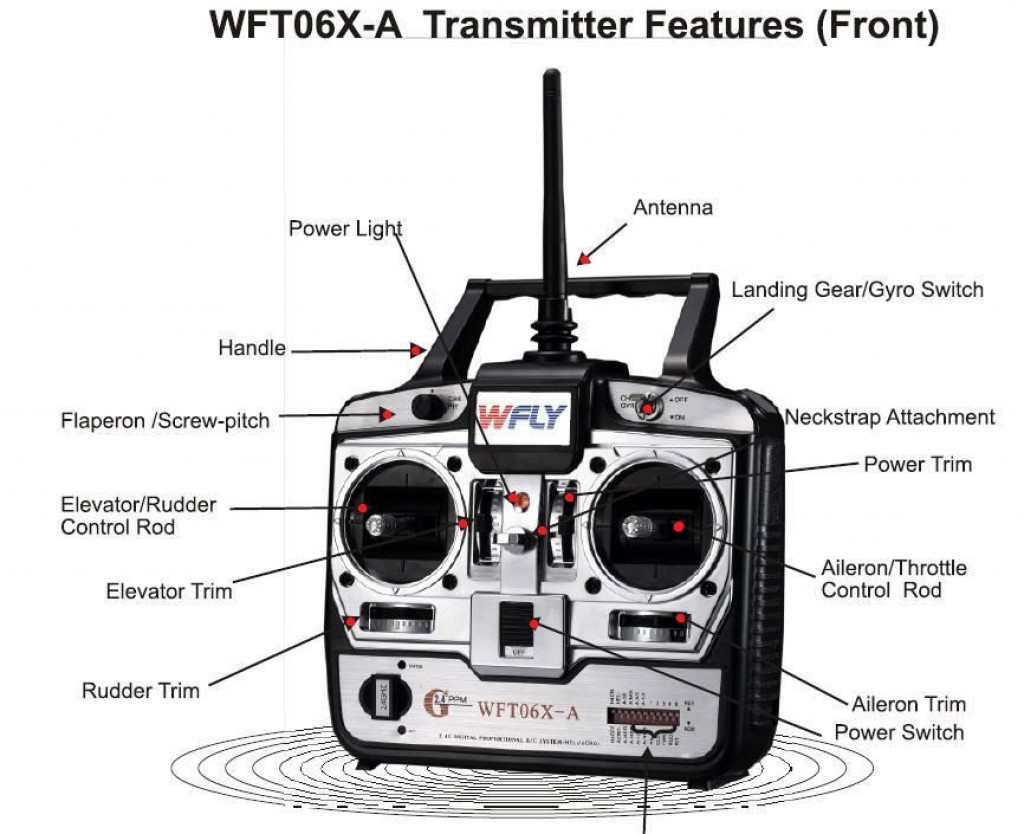


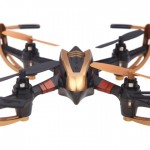
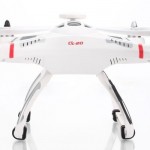
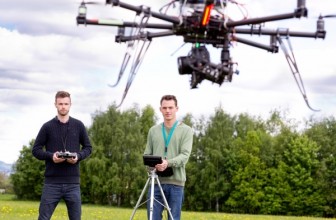
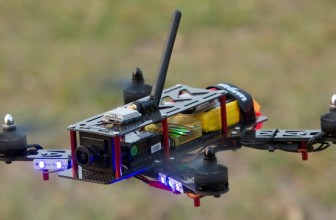
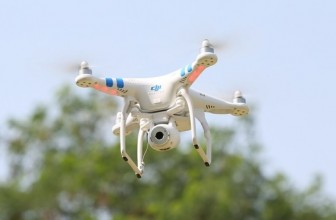
Small correction to an otherwise great post…
“Repeat this exercise as many times as it takes for you to become comfortable with maintaining a descent hover. The key is to focus on achieving the same throttle position each time (10%, 30%, etc.) while using the left joystick only for making very fine adjustments to maintain your current position.”
Should the last sentence not read “…while using the RIGHT joystick only… “?
Thanks!
thnxzz broo…..u r great……but plzz can u suggest me which props do i use with D28265-6 2200kv outrunner …..i have 4s 4000mAh battery wit 30A esc……please mail me on (dpatidar336@gmal.com)
Great tut ! Thanks Damien. any tips about landing?
New to this and excited to start this hobby. Can you post a decent prices drone to start with?
These suggestions are great when you’re learning to fly medium to larger sized drones but here are a few things I’ve tried while I’m learning how to fly the mini-drones. They are actually harder to fly (IMHO) because they require a faster response time. Most of your suggestions are about the same but I have a slightly different order. 1) Start off by staying in just 2 dimensions, meaning only lift off just slightly off the ground and learn how to scuttle around in all directions as well as putting down some painters tape and following a path. 2) Next focus on hovering up and down and rotating (spinning) around with just the left controller. 3) After that try starting from the ground and landing on various cardboard boxes – first with the drone facing the direction you want to travel, then try flying backwards (placing the drone 180 degrees to where you want to travel) then from each side facing the direction you want to travel (same as your suggestions)….but as you get better reduce the size of the box. Go from the ground to landing on the boxes. 4) The real trick with drones is learning not to over-react (panic) and how to recover quickly and to be able quickly transpose your controls based on any direction your drone is facing. You won’t always have the luxury of rotating your drone fast enough to point in the direction you’re heading. 5) You can also try taking your drone for a walk…meaning hovering at around eye or chest level and walking behind it as you go for a walk….like your dog on a leash. Warning: mini-drones are probably better for indoors vs. outdoors…these drones do not have a return mechanism. We lost our first one…it went up took off and wasn’t listening to the controller…someone in our eventually neighborhood found it smashed up (ran over by a car). They returned it to us several months later…I just don’t trust the mini-drones outdoors as a beginner.
is it hard to fly a drone on camera?